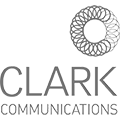All About Media Kits
What Is a Media Kit?
A media kit, sometimes called a press kit, is simply an information packet about a business or product. It is called a media kit or a press kit because many times potential advertising mediums will ask for more information on the potential advertiser. Since most of this advertising is press- and media-related, the term media kit was adopted.
A press kit is like a resume for your company. In it is a collection of company information and articles put together to address questions from the media, investors, potential clients and others. The goal of the press kit is the same as all other marketing that a company does. It should grab the reader’s attention, make a lasting impression and create enough interest that they will contact you for more information.
What’s in a Media Kit?
There are many items that can go into a press (aka media kit) depending on the situation, the audience or the use. A media kit for potential investors is much different than a kit for potential clients. Although a press kit should be comprehensive, every promotional item or piece of marketing collateral ever produced by a company should not be included. Only put information that is current and most relevant to your target reader. When targeting media editors, be respective of their time.
Here are some ideas about what to include in your press kit. Of course, this is a comprehensive list and intended only to provide ideas for what is needed for your target audience. Do not include all of them in your press kit.
- 1 Letter of introduction: Sometimes referred to as the pitch letter, this first impression item is where you will grab or lose the reader’s interest. Tell them upfront why they should care about what you’re telling them. Provide a table of contents or a brief description of the items enclosed in the actual press kit. Let them know you are available for follow-up interviews and questions. Also make sure to include your contact information in this letter.
- Information on the company: This includes your company’s history, a company profile, and profiles of the chief officers, senior management and ownership. Include bio sheets, if appropriate.
- Product and service information, including a product, service or performance review: This will let editors see what others are saying about you or help the editor write his own review. This should also be supported with product or service fact sheets, sell sheets or company brochures that are specific to your product or service.
- Press releases: Many times, these are what instigated and caused the printing of the articles described above.
- Audio and video files of radio or TV interviews, speeches, performances and any other media-covered event: Hard copies will suffice if the actual media is not available. Today, some companies are now putting online audio clips on their Web pages and in online media kits.
- List of frequently asked questions: This helps the editor determine what questions to ask you in an interview or what to include in the article.
- Other items to include:
- Brochures
- Nonprofit and community-service involvement
- Recent awards
- Photos (if appropriate)
- Factual background material and/or white papers
- Specific information and schedules of upcoming promotions and events
- Significant statistics specific to your industry, demographics and target audiences
- Feature article material, such as articles written by company officers or senior management
- Missions, goals and objectives
- Camera-ready logo art
The Key to Getting Noticed
Busy editors sort through piles of press kits each day. Getting your press kit noticed is the key to publication and action! Remember, getting attention is important not only with audiences, but also with editors. Package your materials in a unique way and make sure the materials are presented professionally.
It’s also crucial to follow up to make sure your intended recipient received your press kit. Plus, follow-up calls provide the perfect opportunity for editors to ask questions or schedule an interview. Use this opportunity to build relationships with editors–in fact, doing so will improve your chances of publication or acceptance by your intended audience. But because the distribution of media kits can get a little expensive, you’ve got to make relationship-building a part of your marketing strategy.
The best thing to do right now is to start assembling part of your press kit, based on available materials. Then, add to it as you see fit and develop new materials. You don’t want to create a press kit at the last minute for the editor, investor or potential client who requests one.
The challenge is to put it together on paper, electronically or both. There is a trend now toward online media kits. A lot of these items can be developed for online distribution; it’s just a matter of putting what you already have online or onto letterhead and fact sheets.
Typically, the media kit doesn’t have to be as fancy as people think. Those requesting media kits just want information–not necessarily glitz. See what items you already have and then work on the rest.
